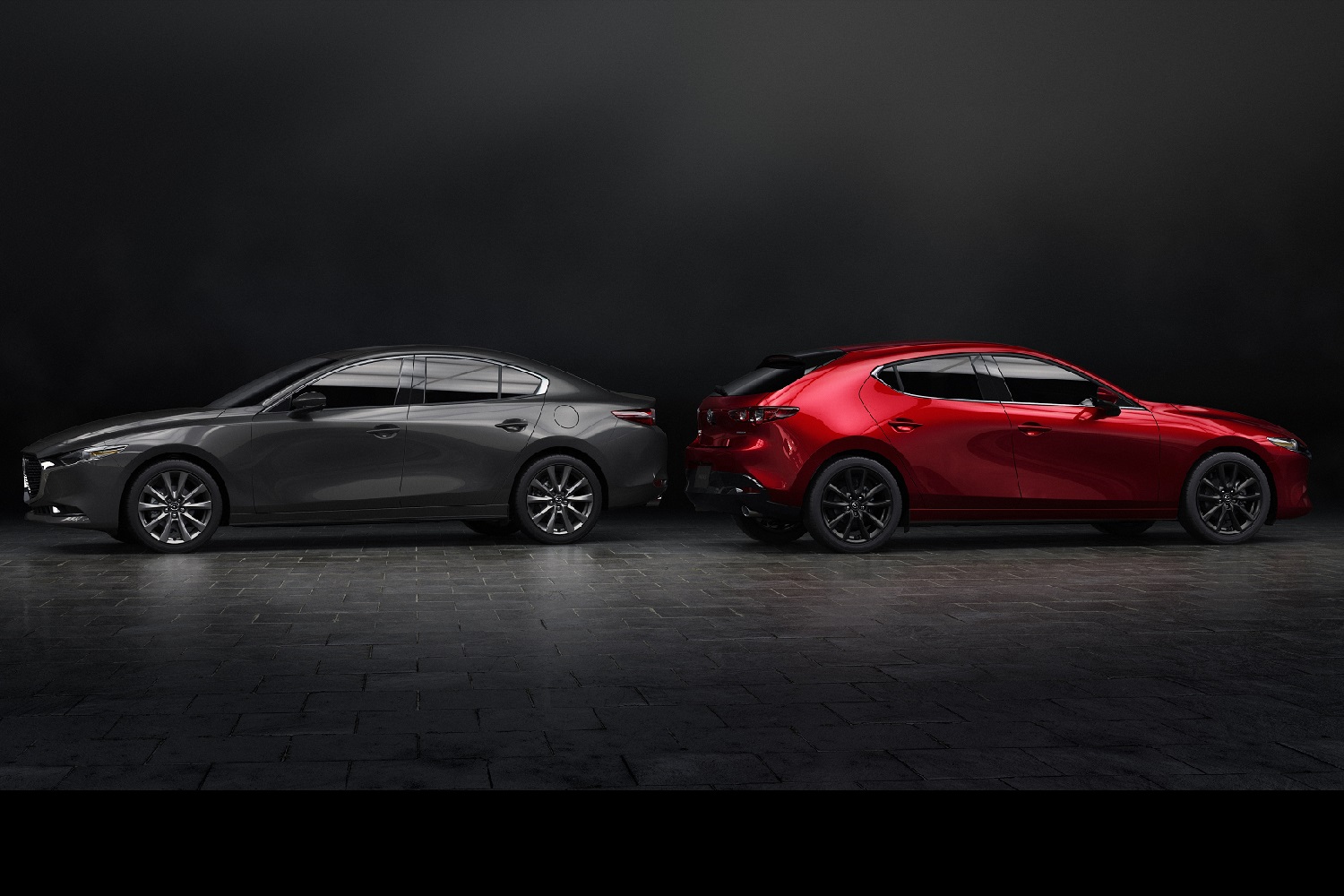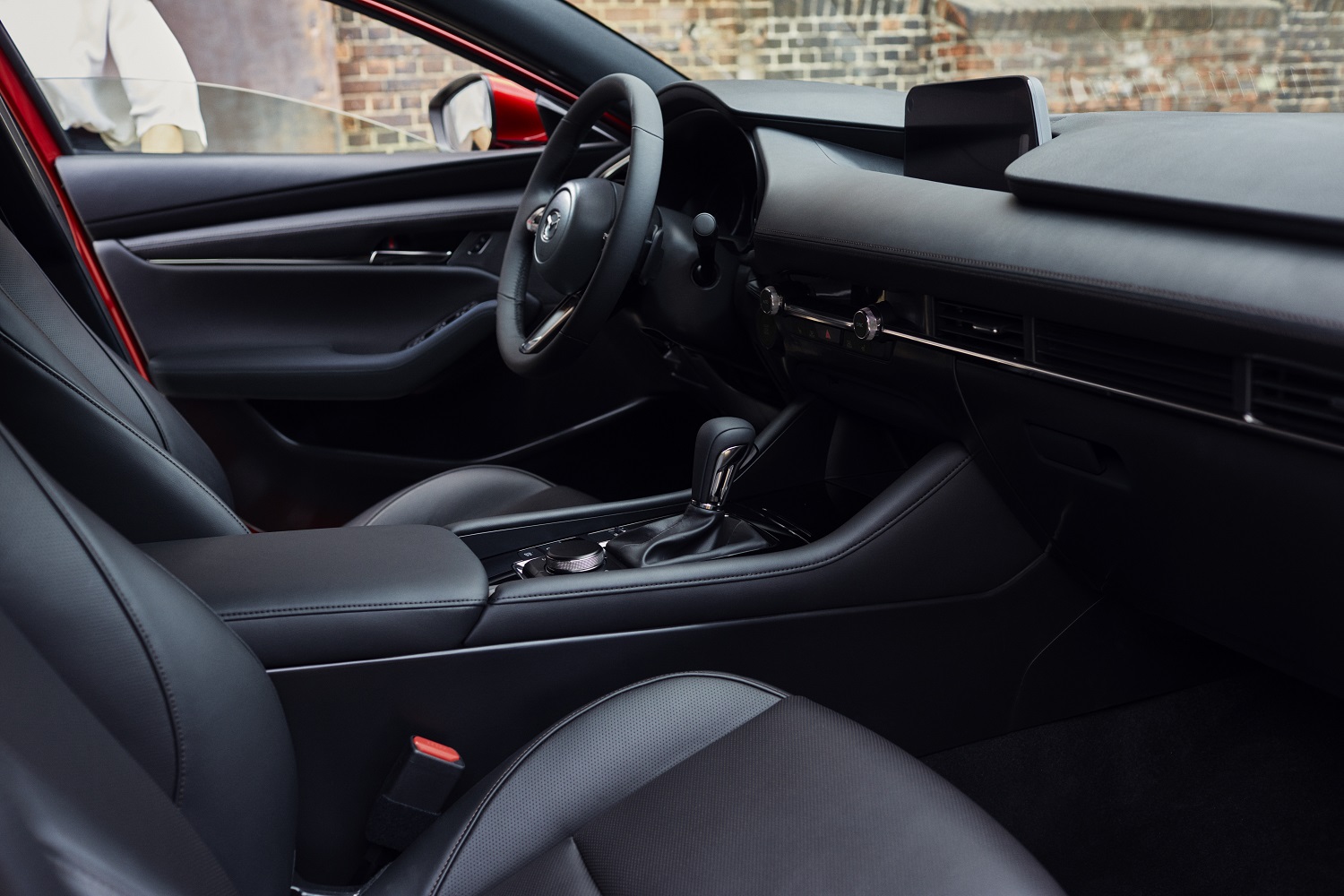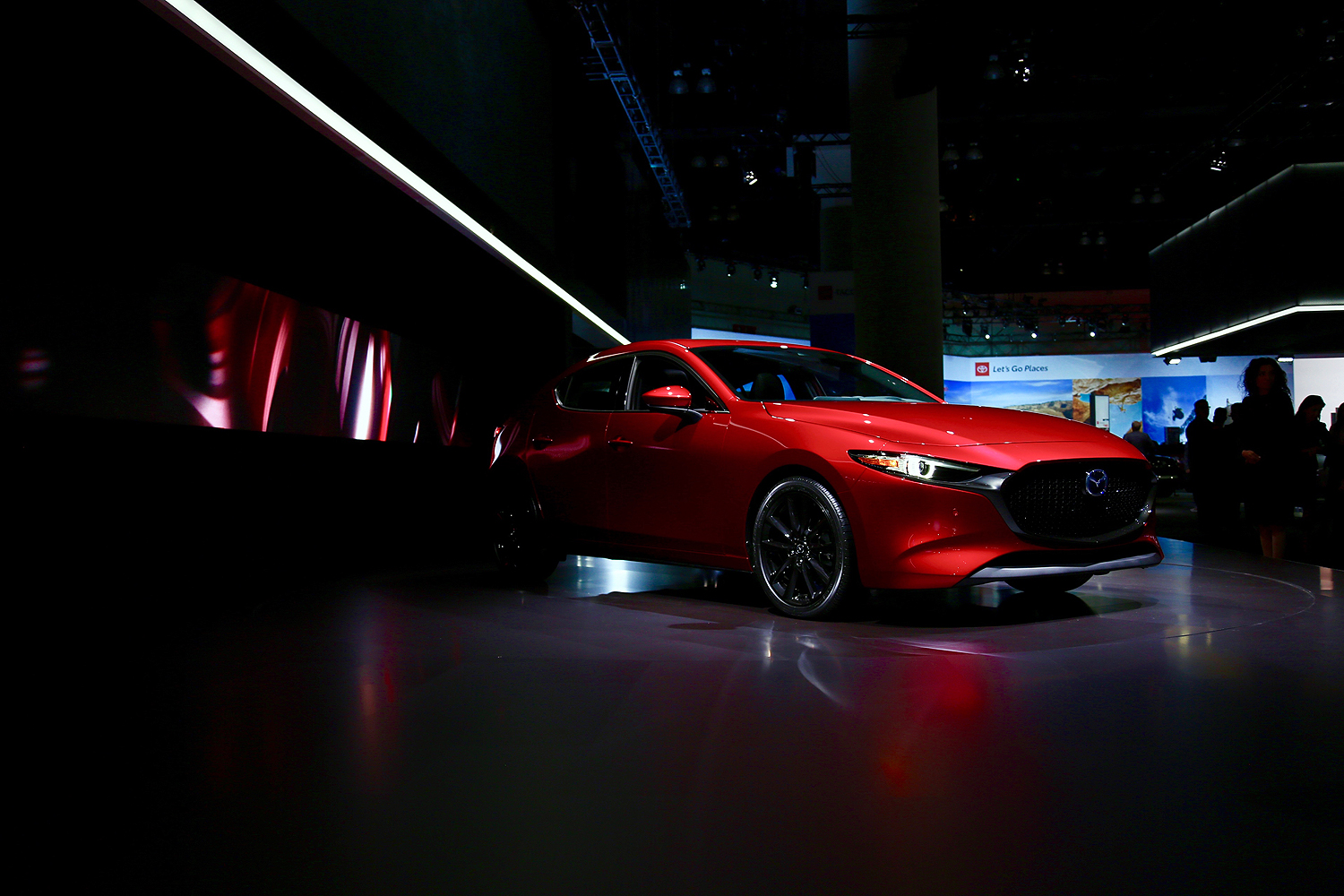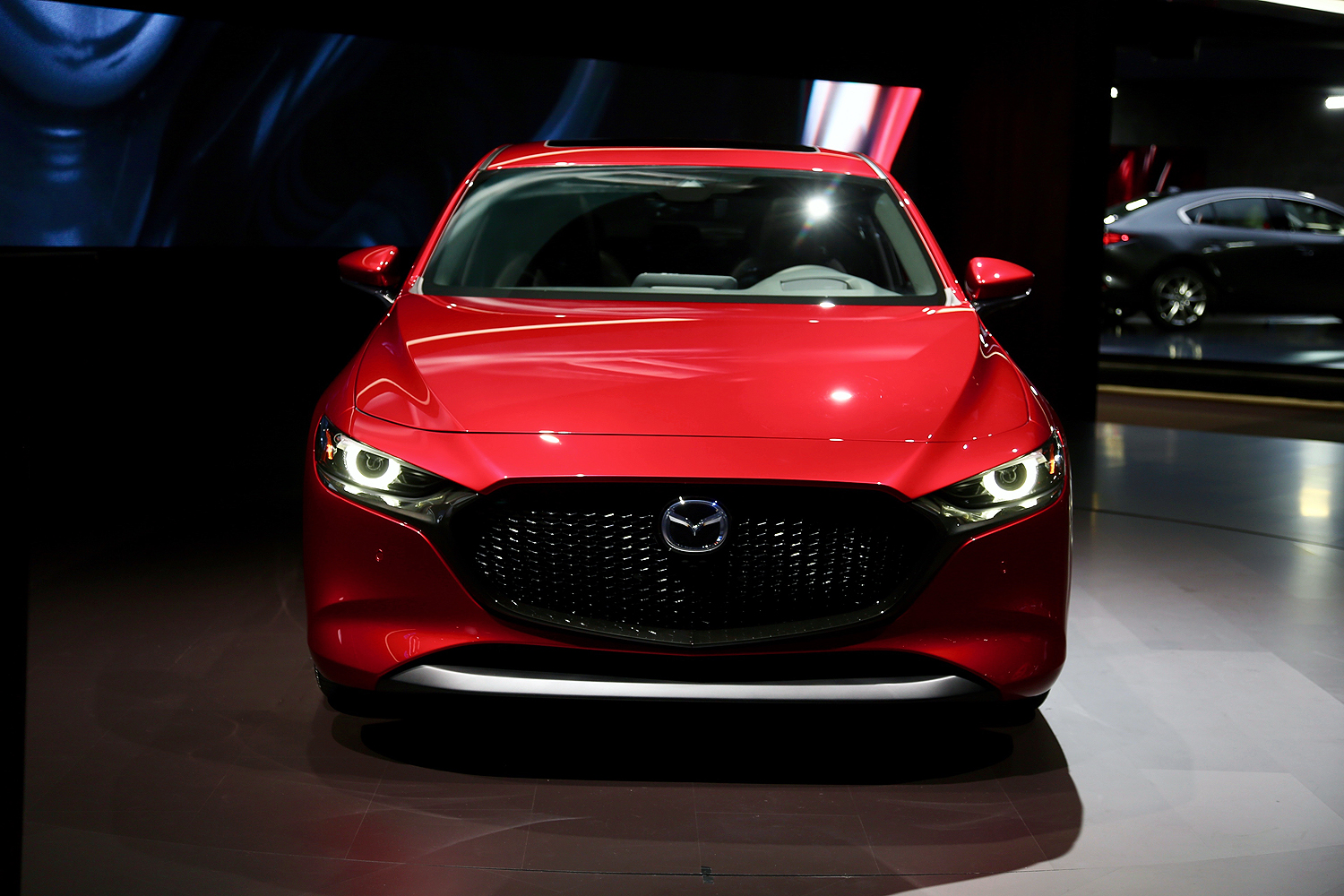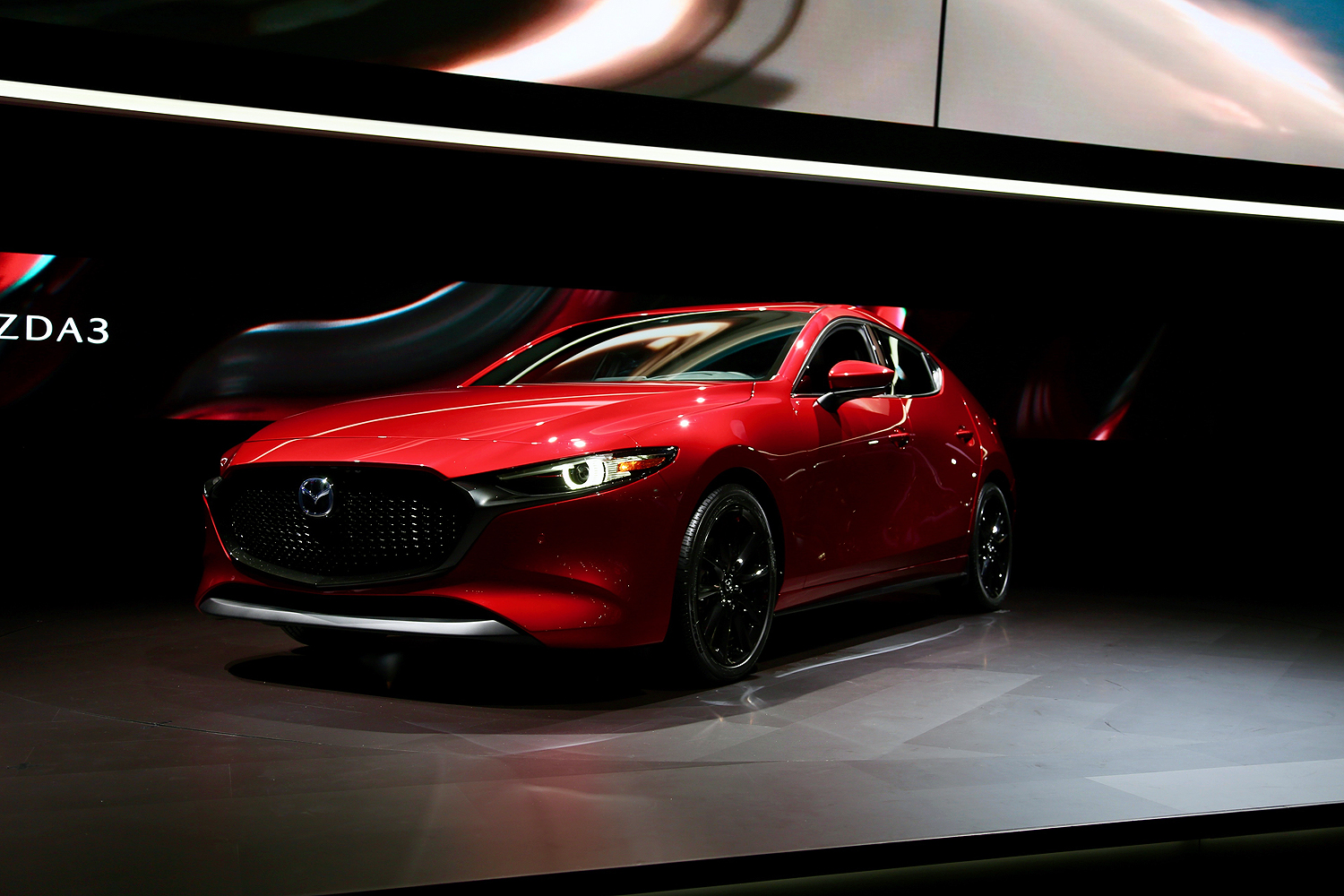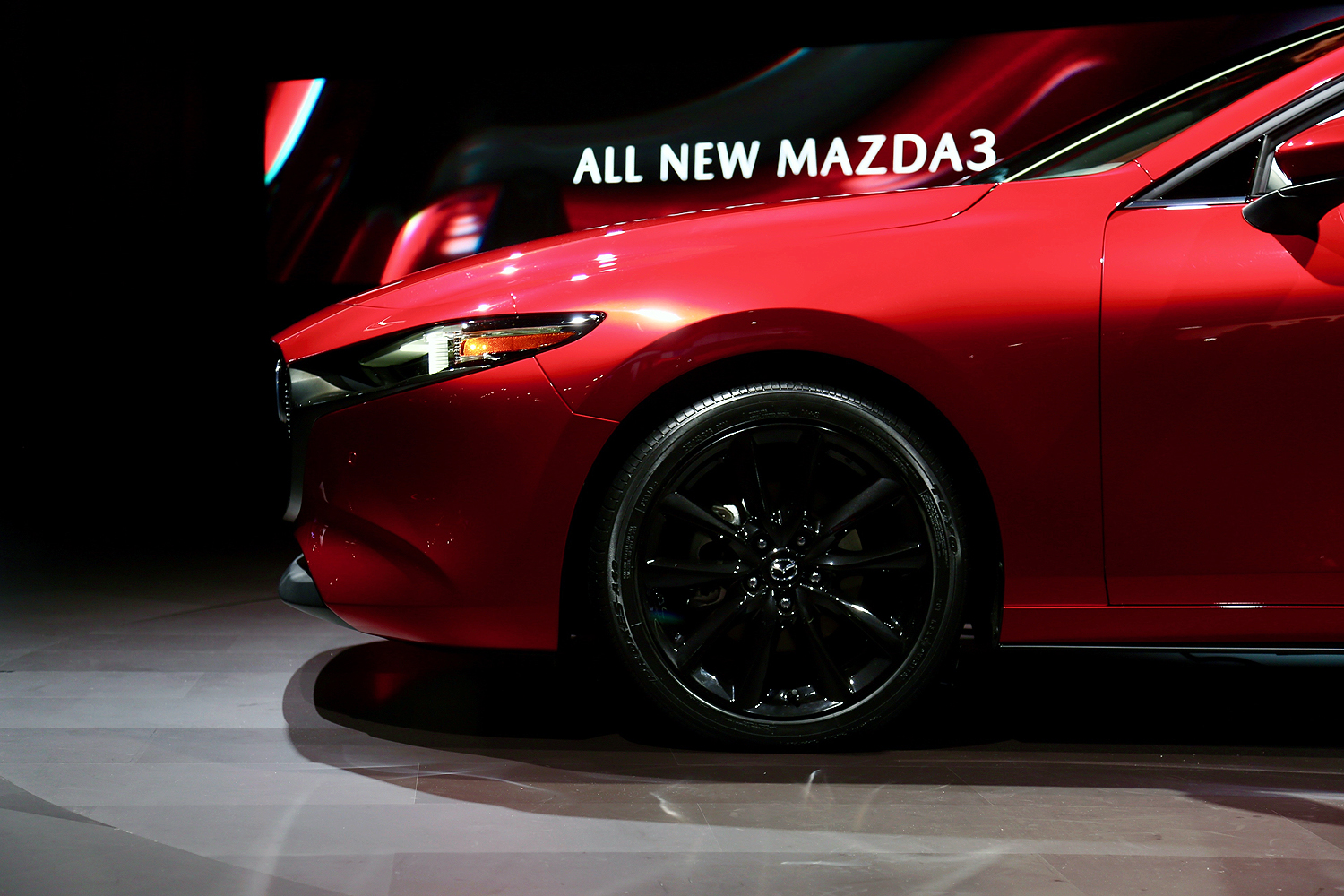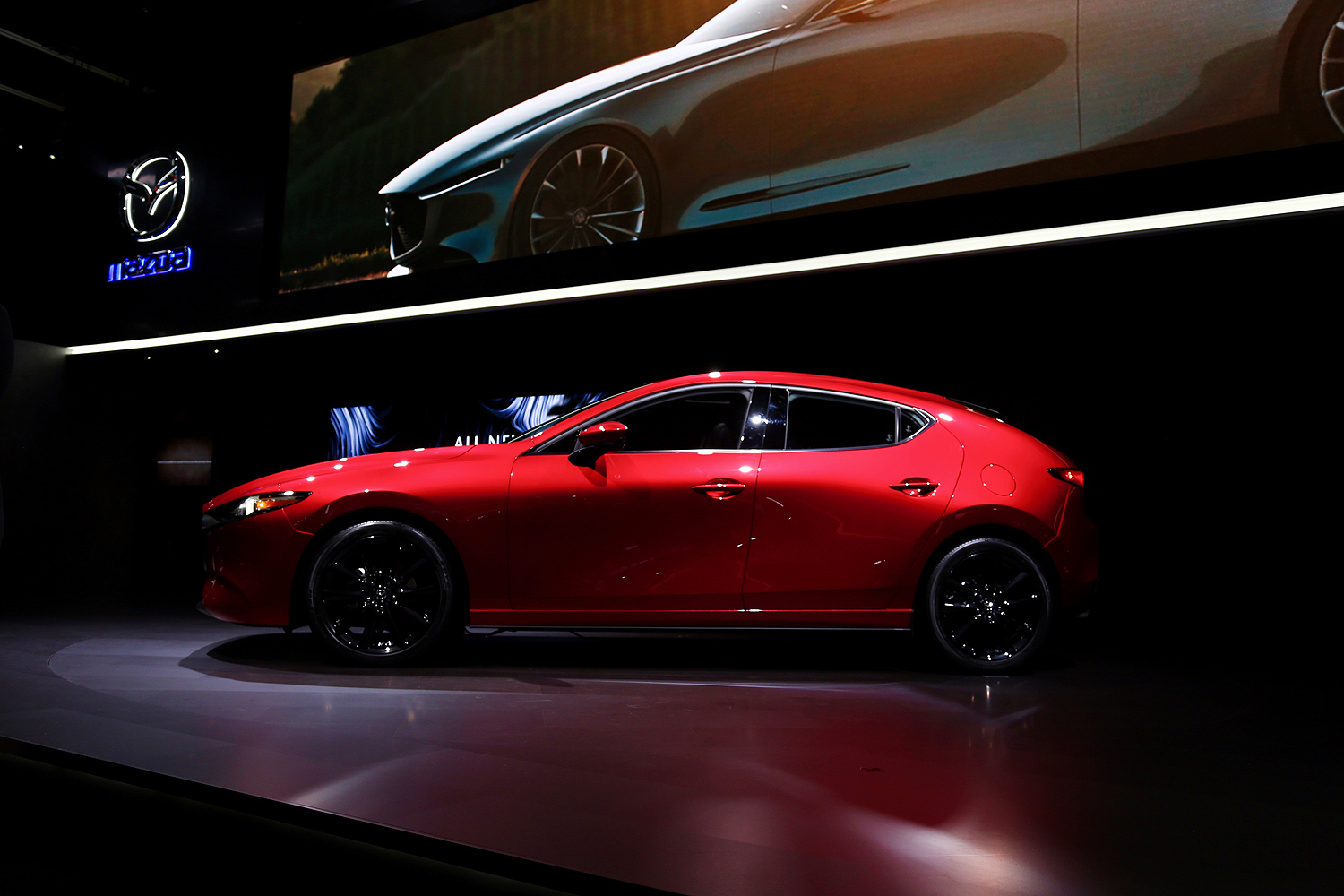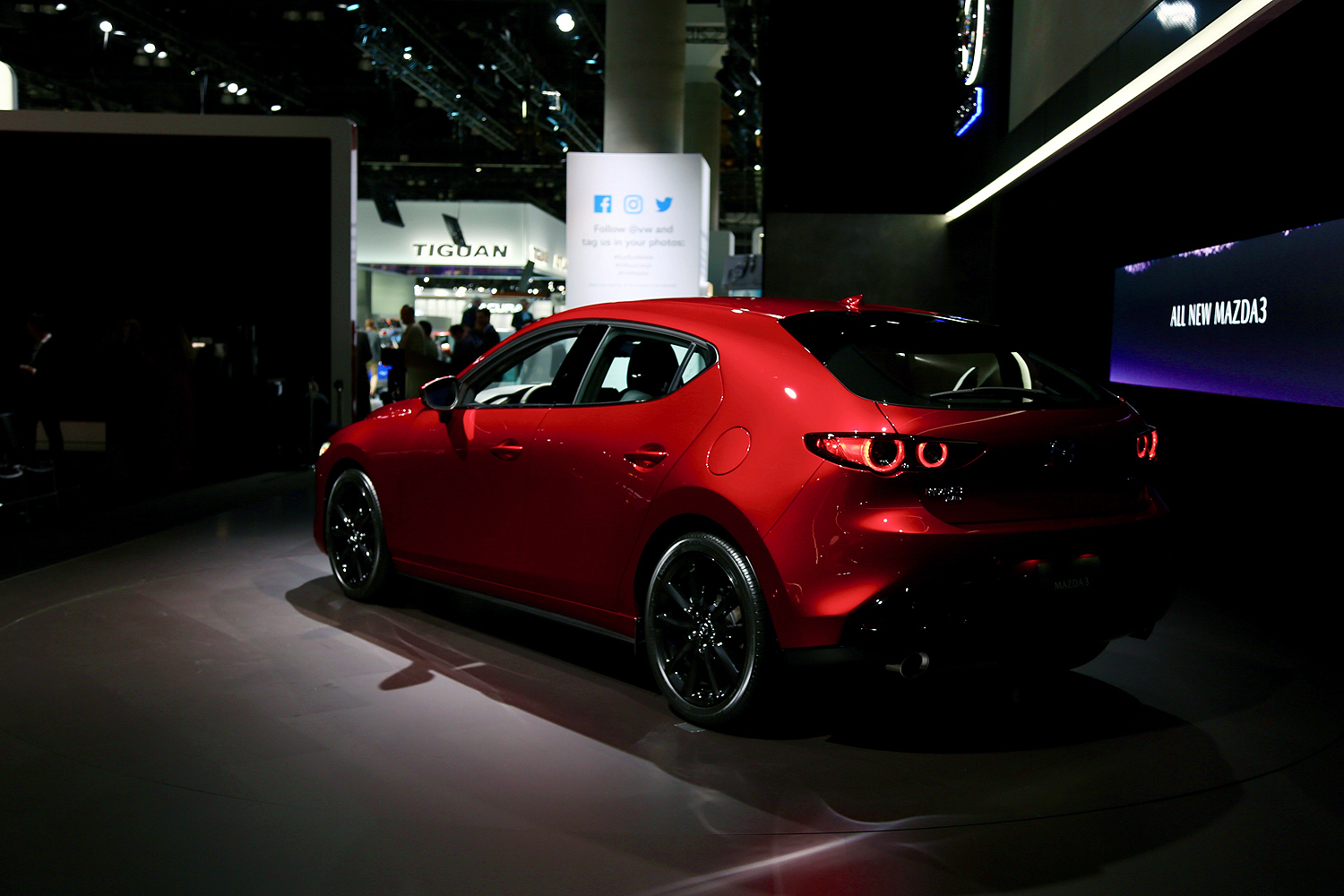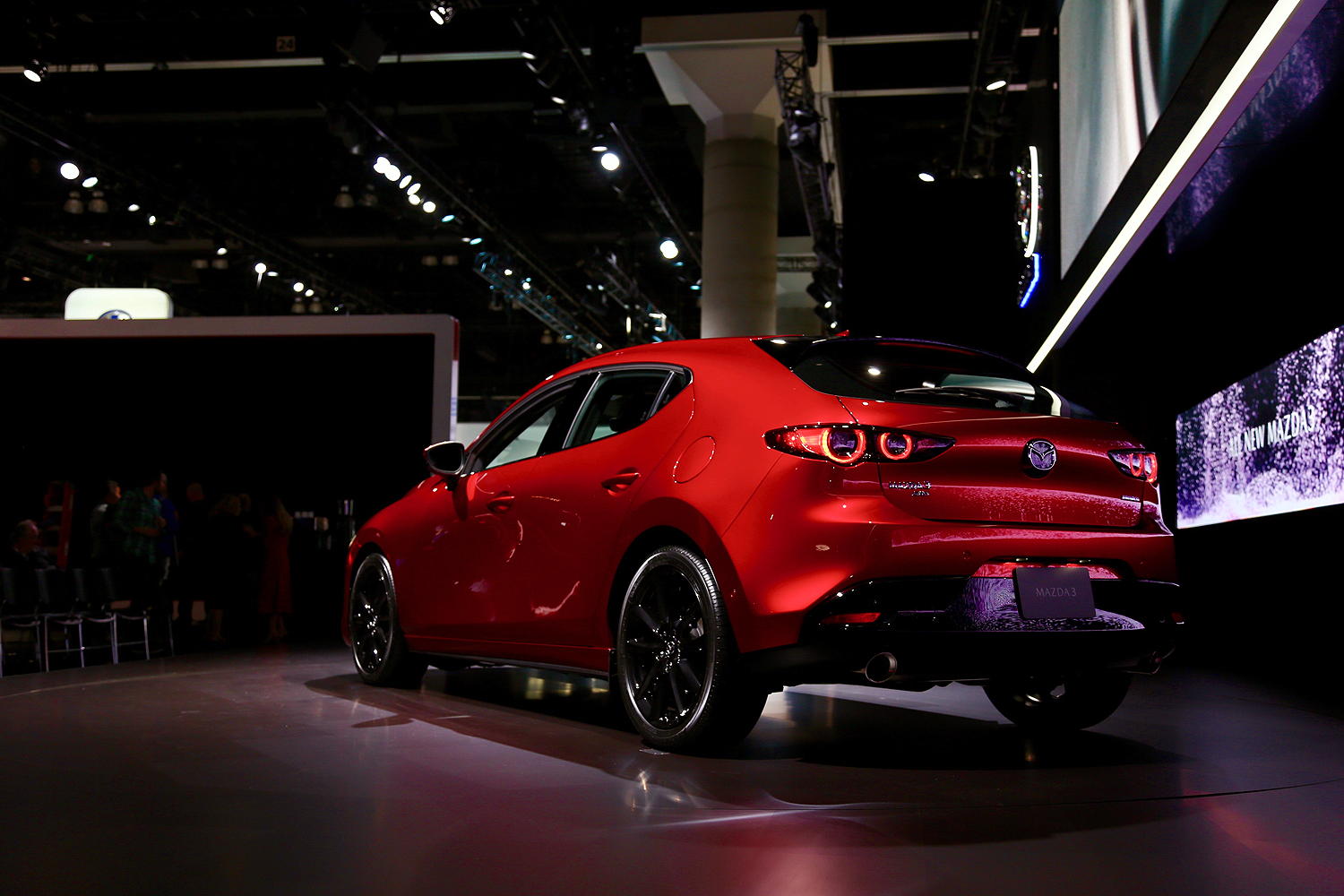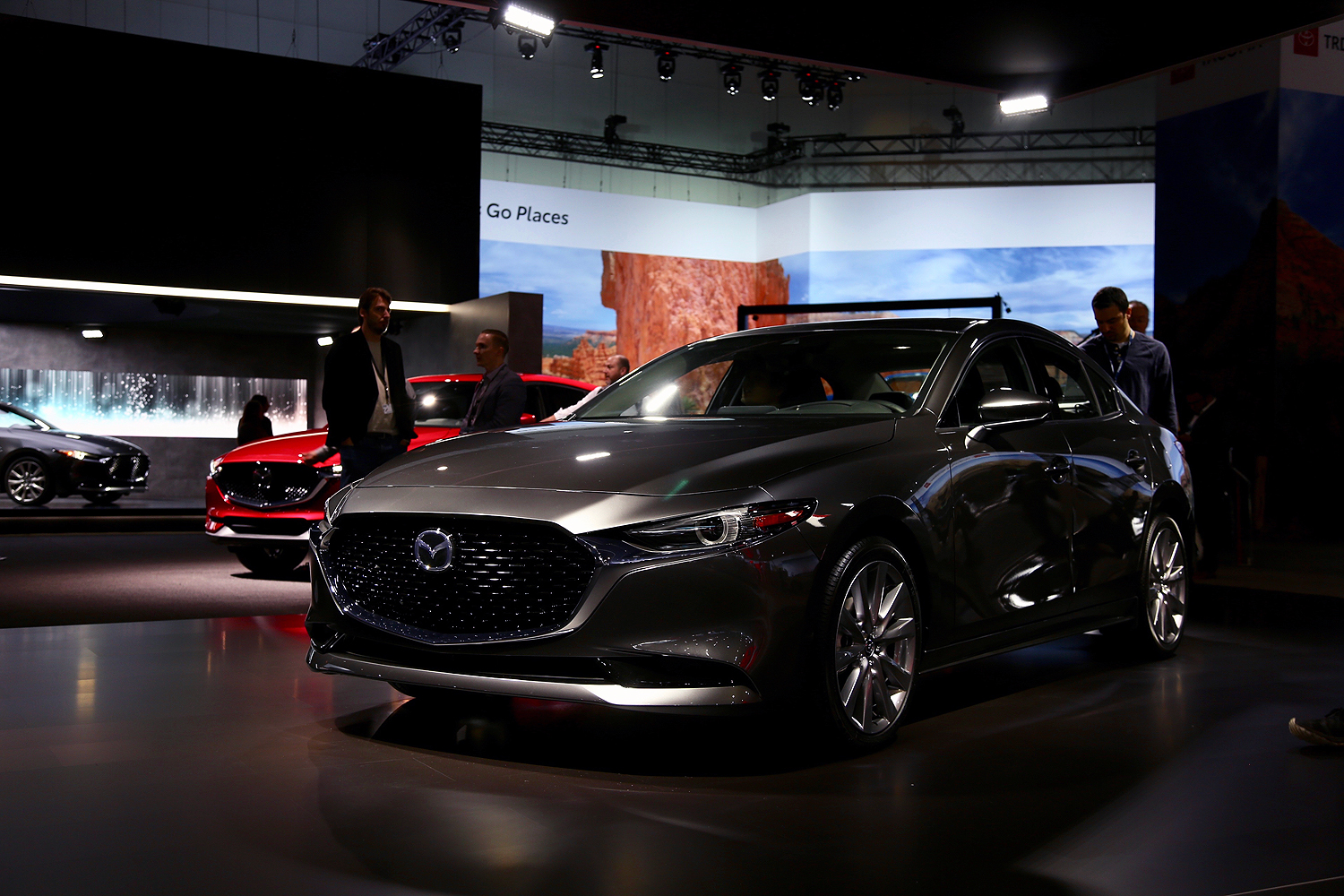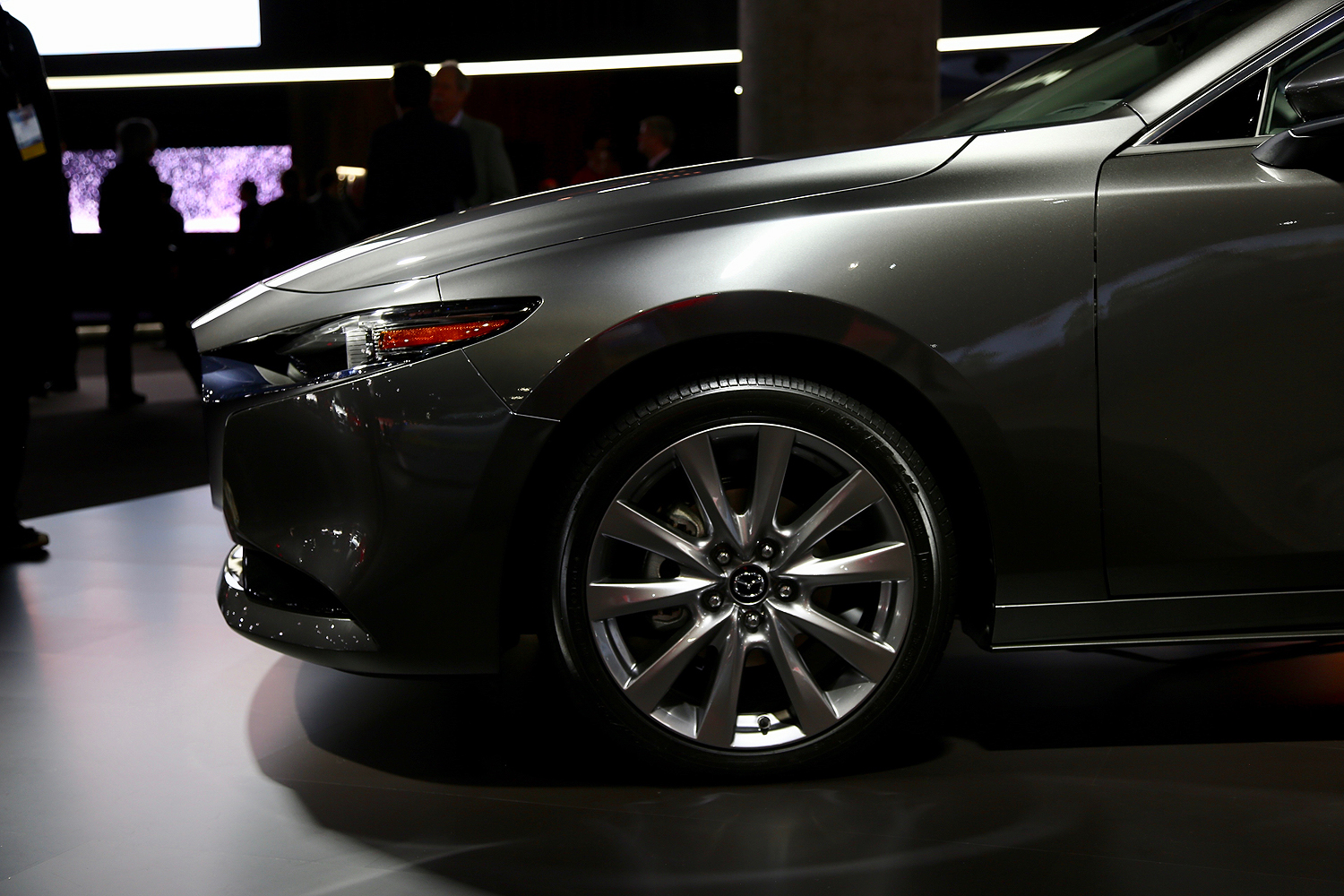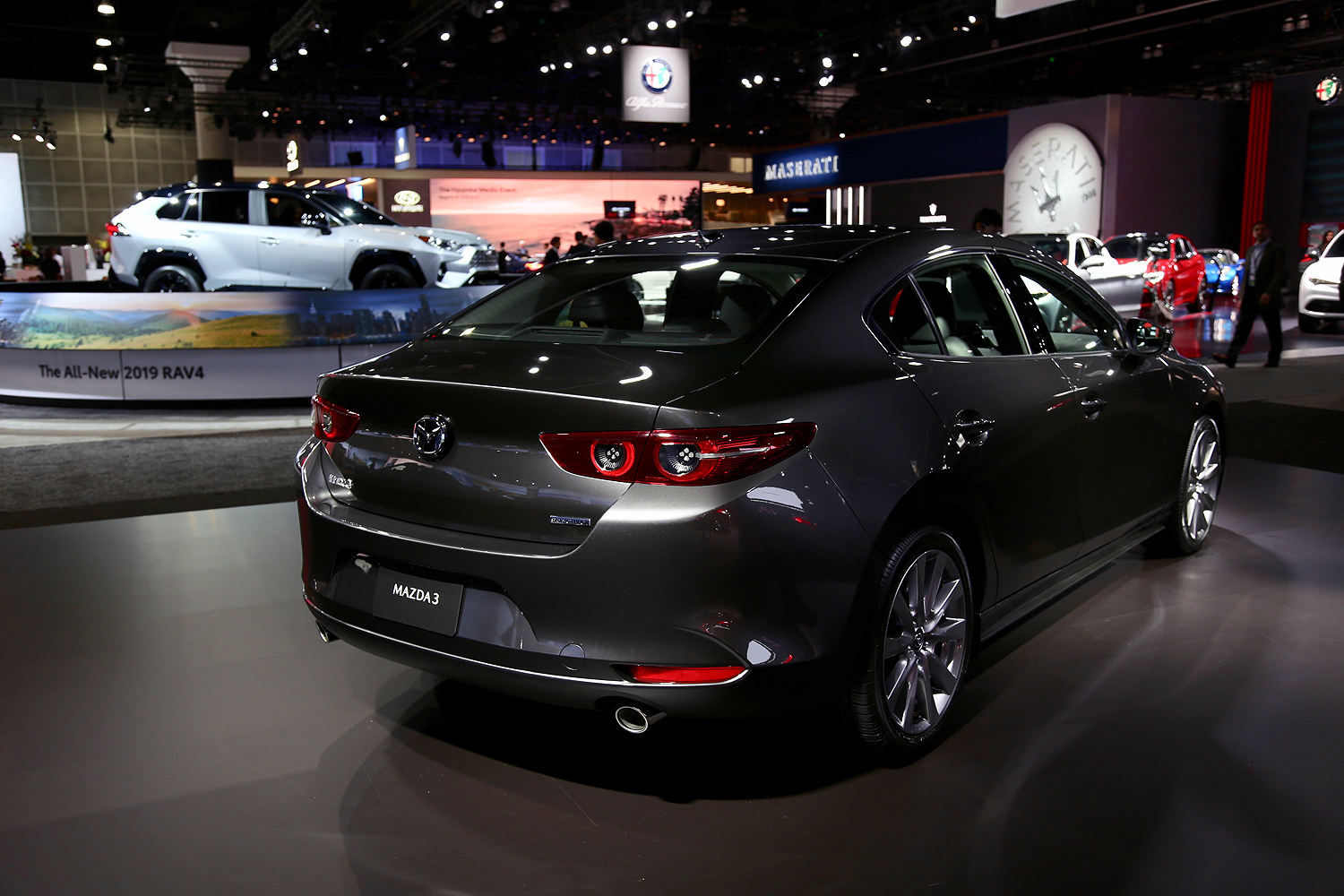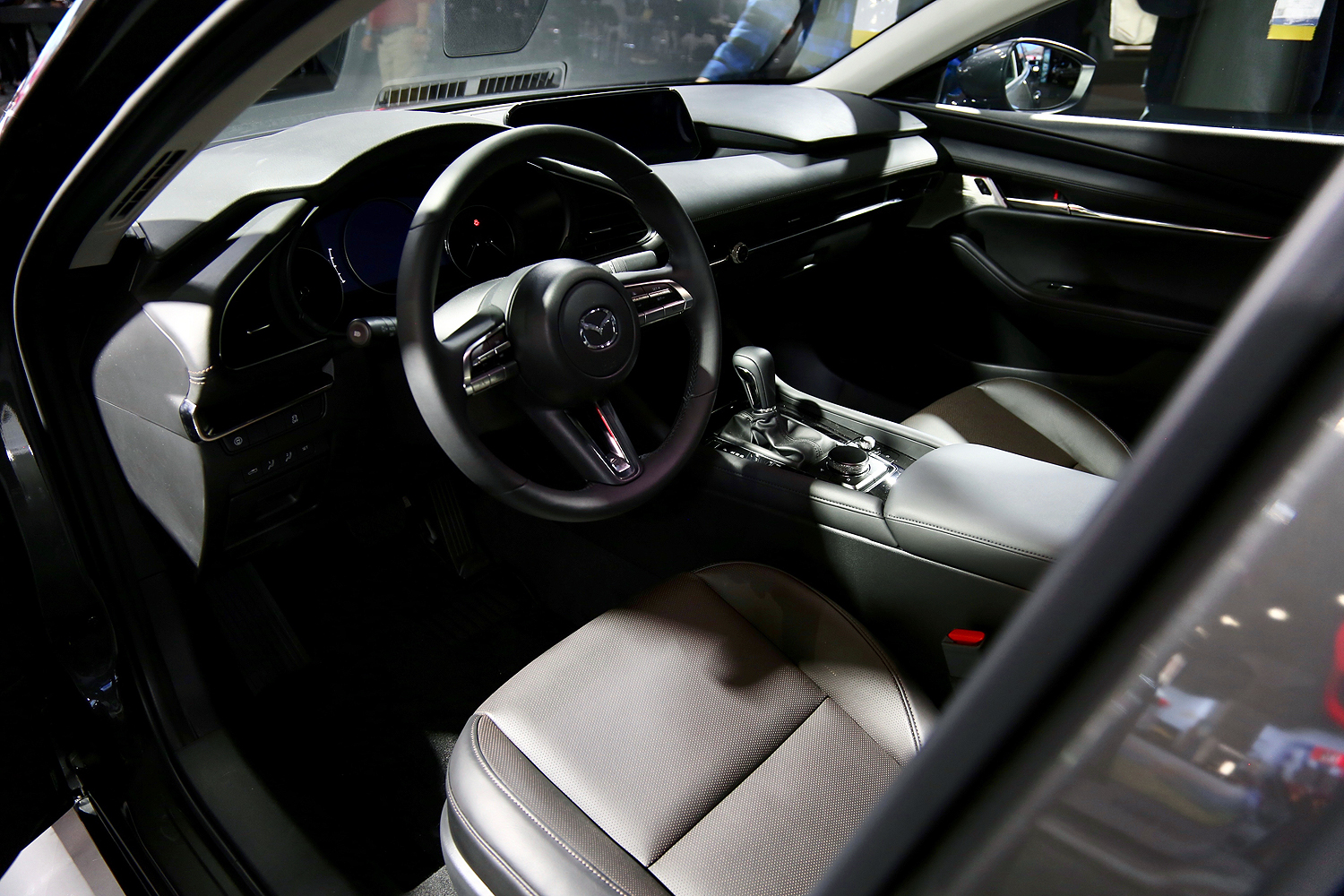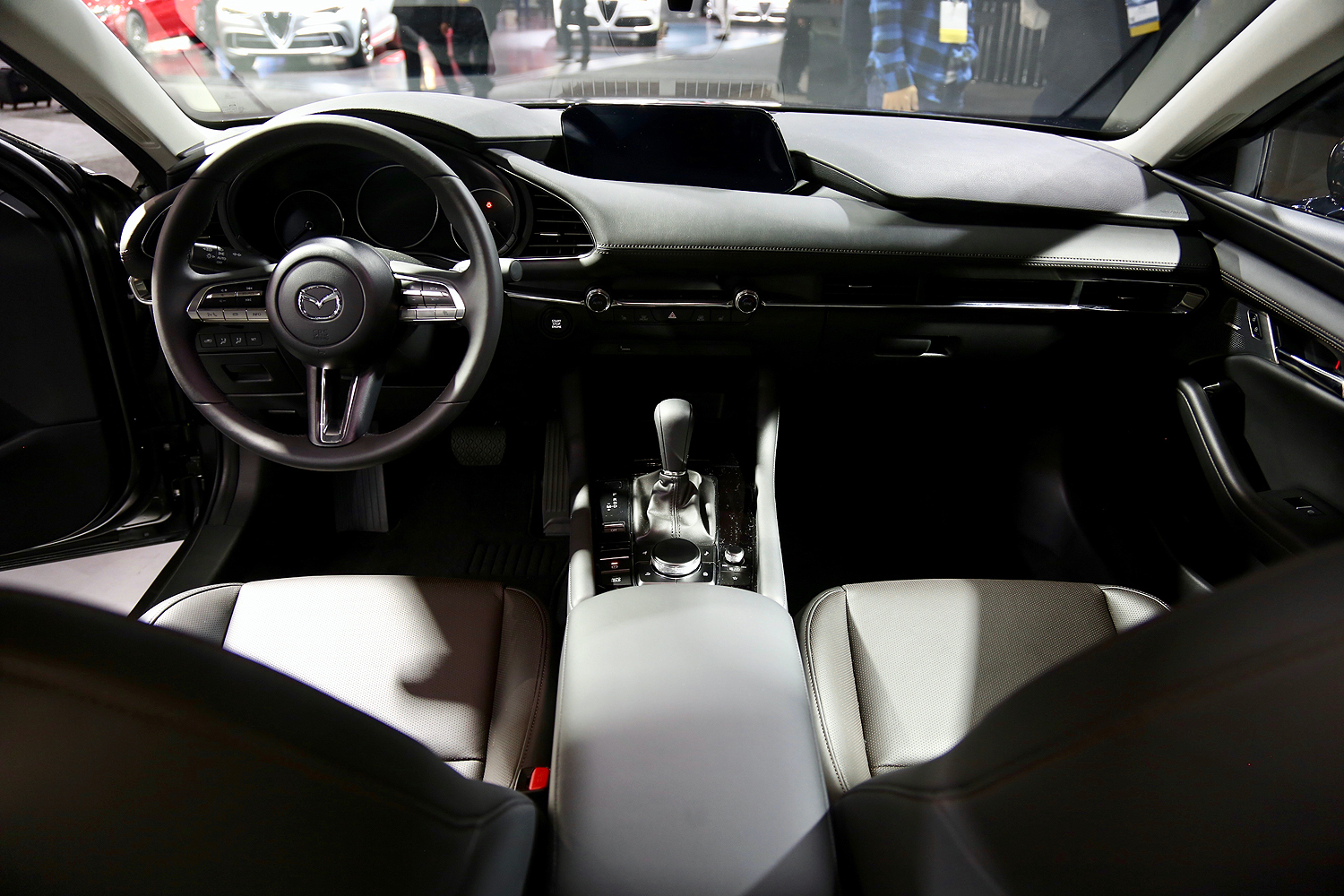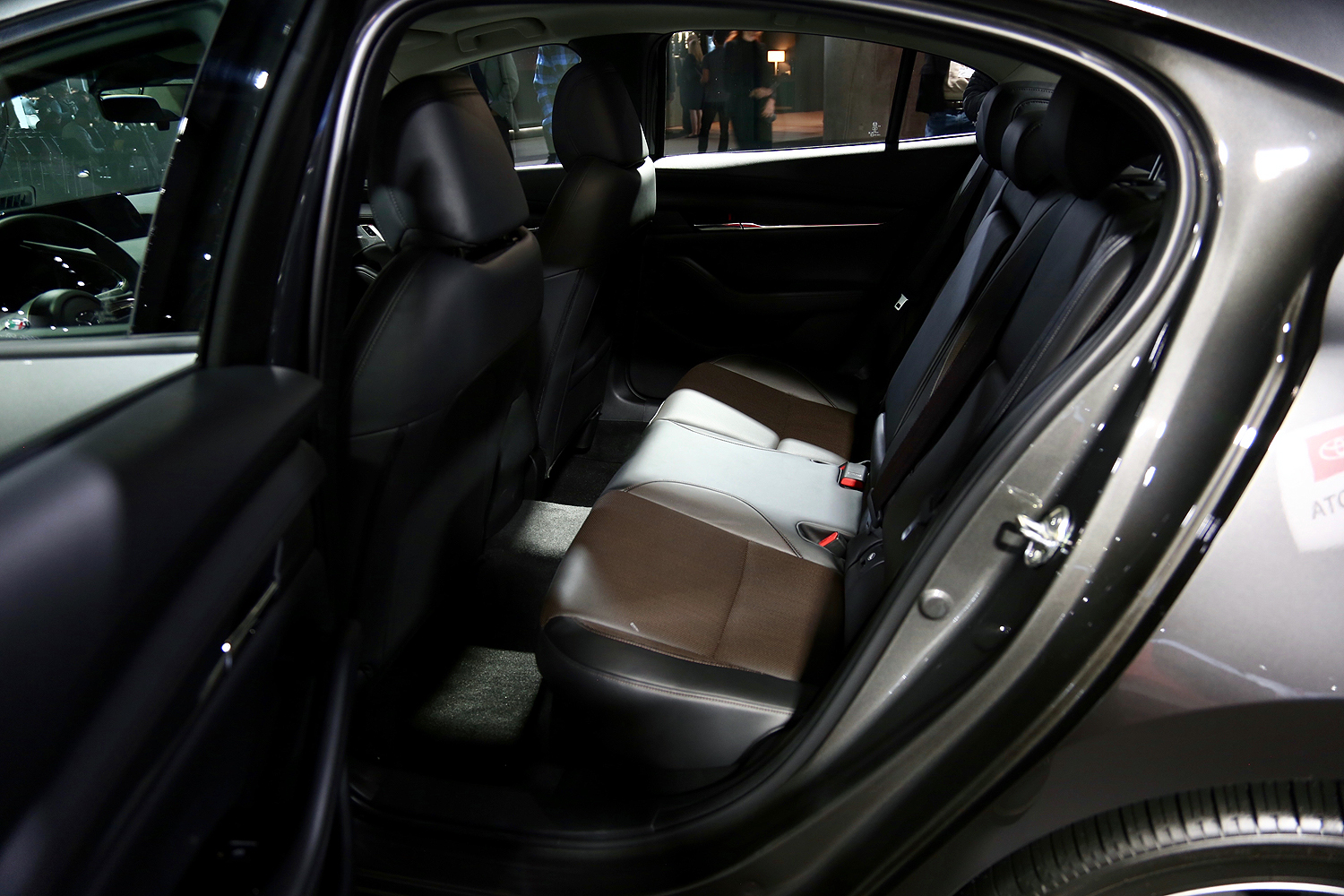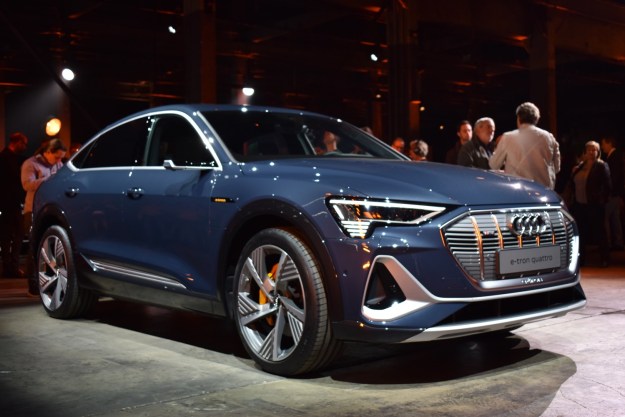Mazda unveiled the all-new, fourth generation 2019 Mazda3 during the 2018 Los Angeles Auto Show. The completely redesigned compact model boasts the latest in the firm’s SkyActiv line of efficiency-boosting technologies plus an eye-catching design.
The 2019 Mazda3 is available as a four-door sedan and as a hatchback, but the two cars look very little alike. Where the sedan hews to Mazda’s established look and feel, the hatchback features a striking rear-end treatment that is likely to be polarizing to hot hatch fans. At the unveiling, Mazda designers emphasized the effort put into creating a fluid look and reflective body surfaces in both designs, but mainly leaned to the hatchback as their example.
Inside, the two versions feature an 8.8-inch floating display screen mounted high on the dashboard like in the current model. A redesigned control dial wheel has been included, as well as a simplified user interface. Mazda’s Active Driving Display head-up display has also been revised for clarity, while a Bose Audio sound system is optional.
Mazda developed a new color called polymetal gray for the hatchback, which appears as a light blue-gray in some lights. Inside, the hatchback is available with burgundy upholstery not offered in the sedan.
The 2019 Mazda3 is offered with a wide range of engine options, including 1.5-liter, 2.0-liter, and 2.5-liter versions of Mazda’s proven SkyActiv-G gasoline engine. Mazda also offers the ground-breaking SkyActiv-X engine, which uses lean combustion and compression ignition technology similar to a diesel engine to improve fuel economy without sacrificing power or reliability. The SkyActiv-X engine is augmented by Mazda’s M hybrid system, which appears in the 3 for the first time. Finally, Mazda boldly offers the new Mazda3 with a 1.8-liter SkyActiv-D diesel engine.
The aforementioned engines shift through either a six-speed manual transmission or a six-speed automatic. And while front-wheel drive comes standard, the 3 holds its own in the snow. Its platform is new, and it incorporates a number of chassis and body improvements. This enabled the niche Japanese automaker to include optional all-wheel-drive for the first time in this model.
Mazda has finally brought its i-Activ predictive all-wheel drive system to the compact segment. The i-Activ system incorporates inputs as disparate as the windshield wiper setting and wheel speed monitors to predict and rectify traction losses before the driver is aware of an issue. Mazda also includes its industry-exclusive G Vectoring Control Plus technology to enhance steering response. G Vectoring Control has been standard in the mid-size Mazda6 sedan and CX-5 crossover for several years. The system minutely reduces engine torque to shift weight to the front wheels when cornering, resulting in more responsive steering.
The new Mazda3 also gains active safety features such as driver monitoring, smart brake support, front cross traffic alerts, and Mazda’s Cruising & Traffic Support system, which assists the driver with steering, accelerator, and brake inputs when driving in heavy traffic.
After basking under the lights at the Los Angeles Auto Show, the 2019 Mazda3 will reach dealer showrooms early in 2019. Look for a pricing announcement before then.
Editors' Recommendations
- Fault with Mazda3’s emergency braking system could cause random activation
- 2019 LA Auto Show: Highlights, headlines, and everything awesome
- New Hyundai Ioniq electric vehicle gets big boosts in range and horsepower
- Lincoln Corsair Grand Touring adds plug-in hybrid power
- 2020 Karma Revero GTS adds performance to go with its sleek looks

